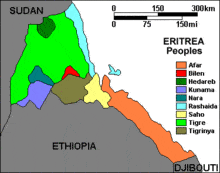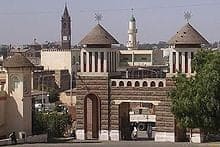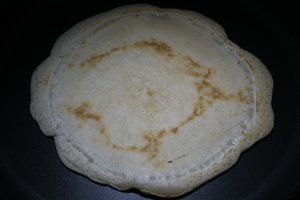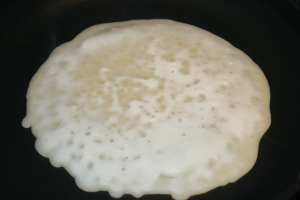 Greetings hungry travelers! I have added a tweet button below my posts in case you would like to help spread the word. You have probably noticed a reduction in the volume of posts. I am cooking about one time per week due to the recent return to a day job. I hope I continue to bring you delicious global recipes that you are encouraged to cook along with me. Let’s continue the adventure!!!
Greetings hungry travelers! I have added a tweet button below my posts in case you would like to help spread the word. You have probably noticed a reduction in the volume of posts. I am cooking about one time per week due to the recent return to a day job. I hope I continue to bring you delicious global recipes that you are encouraged to cook along with me. Let’s continue the adventure!!!
Today we head back to the land that brought us among other important things, human existence. It is from our destination that scientists believe mankind as we know it first emerged from Northern Africa to begin settling what we now know as the Middle East then onward into the European landmass and so forth. This land from whence we emerged has been a land of cultural clashes and battles for territory and ideology even to this day. Eritrea is a relatively young country that falls directly in the heart of this ancient place.
To get there from Equatorial Guinea, we sail north and east around the top of Africa and into the Mediterranean Sea. Continuing east we reach the head of the Suez Canal and pass into the volatile yet crucial Red Sea crossing that separates much of Europe and Northern Africa from the Middle East before reaching the Indian Ocean. It was not so long ago that we visited these shores when we ventured to Djibouti. Eritrea is the Northern neighbor of Djibouti and also borders Ethiopia and Sudan.
 Eritrea declared independence from Ethiopia in 1991 and was recognized as such in 1993. Since this time, there has been tension and fighting between the two as well as between Sudan and Eritrea over their shared yet non-demarcated border. The country of Eritrea claims nearly 1000 kilometers of shoreline on the Red Sea, a highly strategic position in the region. Eritrea has also been in dispute with Yemen on the Arabian Peninsula over the Hanish Islands located in the Red Sea. To this day Eritrea controls several of these islands while Yemen controls the others.
Eritrea declared independence from Ethiopia in 1991 and was recognized as such in 1993. Since this time, there has been tension and fighting between the two as well as between Sudan and Eritrea over their shared yet non-demarcated border. The country of Eritrea claims nearly 1000 kilometers of shoreline on the Red Sea, a highly strategic position in the region. Eritrea has also been in dispute with Yemen on the Arabian Peninsula over the Hanish Islands located in the Red Sea. To this day Eritrea controls several of these islands while Yemen controls the others.
In addition to its strategic importance, Eritrea falls in the mouth of the Great Rift Valley, the region of Africa most known for its incredible mineral wealth. Most of Africa’s current conflicts in some way are tied to the battle for these resources and the violence has claimed millions of lives. From the mouth of the Valley located on the Red Sea, the Nile River and the secondary rivers extend south several thousand miles to Mozambique and Malawi. These river waters have been stained by the blood of conquest and pillaging for many centuries and the conflicts continue to this day.
 Eritrea is a country of approximately 5 million people that are nearly evenly divided between Christianity and Islam. Mosques and churches neighbor each other in the capital city of Asmara.
Eritrea is a country of approximately 5 million people that are nearly evenly divided between Christianity and Islam. Mosques and churches neighbor each other in the capital city of Asmara.
The culture and food are influenced by the occupation of the land by Italy then UK and finally by Ethiopia, which lies at the core of the fighting with that country that has claimed nearly 70,000 lives. Other influences include the Arabian Peninsula which lies so close and from which have come invaders for many centuries. The blend of pepper spice known as Berbere, highlights the tastes of the region and is used extensively in both Eritrean and Ethiopian cooking. It is a main ingredient in today’s recipe.
The dish Zigini is the national dish of Eritrea and can be found throughout the region and in Ethiopia as well. It is a hearty tomato based stew with cubes of meat either lamb or beef that is made spicy with the addition of the Berbere pepper blend. I am including recipes for the dish as well as how to prepare the spice blend. The rich aromatic blend of flavors finished with the fires of the northern African pepper blend is a truly authentic way to experience the flavors of the region. Warning, this dish is not for the weak at heart.
Zigini is often served over a bread called Injera which is a low gluten flat bread prepared similar to pancakes from a batter cooked quickly on a griddle or stone. This bread is distinctive in that it can be used as both bread and as a utensil with which to consume the delicious but fiery stew. In Eritrea the bread is made using flour ground from Teff. This grain is the smallest grain on earth with nearly 150 grains needed to yield the same amount as one grain of wheat.
CLICK HERE FOR PRINTER FRIENDLY VERSION
Rating:
Appearance: 3 out of 5
Aroma: 5 out of 5
Flavor: 5 out of 5
Total: 13 out of 15
Ingredients:
2 lb stewing beef, in cubes
1/4 cup vegetable oil
2 large onion, chopped
4 clove garlic, crushed
2 can tomato, with liquid
salt, pepper
fresh coriander (cilantro) (optional to garnish)
Berbere Pepper 3 tbsp (If you would like a milder stew, use 1/3 of the Berbere in the recipe.)
A child friendly version can be made by leaving the black and hot peppers out of the spice blend until after the stew is prepared and dished out for the kiddies (or those who don’t like spicy food). This will give the aromatic quality of the stew without the fire. If you take this route, make sure you toast the peppers separately and add them to the stew, simmering another 5-10 minutes for the flavors to incorporate before serving.
Recipe for Berbere
1/4 teaspoon ground ginger
1/8 teaspoon ground coriander
1/8 teaspoon ground cardamom
1/8 teaspoon ground fenugreek
1/16 teaspoon ground cloves
1/16 teaspoon ground allspice
1/16 teaspoon ground cinnamon
1/4 tablespoon salt
1 1/4 tablespoons cayenne pepper
1/2 tablespoon paprika
1/4 teaspoon fresh ground black pepper
Directions
For the Berbere, combine the spices and roast in a dry skillet on low to moderate heat, stirring constantly, for about 5-10 minutes, or until roasted.
To store extra spices place in an air tight jar.
For the stew, fry the meat on high heat until brown, add the onion stirring for 3-5 minutes till translucent, and eventually add the garlic and 3 tbsp Berbere Seasoning.
Add the tomatoes with their liquid and boil slowly until the meat is tender and the stew has thickened (30-60 minutes).
Garnish with coriander and serve hot on Injera (Ethiopian flat bread).

Injera Recipe
Ingredients
1/4 cup teff flour
3/4 cup all-purpose flour (1 cup of all purpose if you don’t have teff)
1 cup water
a pinch of salt
peanut or vegetable oil
a mixing bowl
a nonstick pan or cast-iron skillet
Tip
If you have teff grain instead of flour, first grind it in a clean coffee grinder, or with a mortar and pestle.
Tip
Many Ethiopians in America use square-shaped, electric, nonstick pans. These heat evenly and make it easy to remove the Injera once it is cooked.
Did You Know?
Teff is extremely high in fiber, iron, and calcium.
Preparation
Put the teff flour in the bottom of a mixing bowl, and sift in the all-purpose flour.
Slowly add the water, stirring to avoid lumps.
Stir in the salt.
Heat a nonstick pan or lightly oiled cast-iron skillet until a water drop dances on the surface. Make sure the surface of the pan is smooth: Otherwise, your injera might fall apart when you try to remove it.
Coat the pan with a thin layer of batter. Injera should be thicker than a crêpe, but not as thick as a traditional pancake. It will rise slightly when it heats.
Cook until holes appear on the surface of the bread. Once the surface is dry, remove the bread from the pan and let it cool.
What’s Going On?
If you’ve ever cooked pancakes, making Injera might seem familiar. In both cases, tiny bubbles form on top as the batter cooks. Keeping an eye on these bubbles is a great way to see how close the pancake or Injera is to being ready without peeking underneath.
These bubbles come from the carbon-dioxide produced by the leavener—usually baking powder or soda in the case of pancakes, “wild” yeast in the case of Injera. Neither batter contains much gluten. Most pancake recipes tell you not to mix the batter too much. If you do, gluten will develop, making them too chewy. Teff, the grain used to make Injera, contains very little gluten to begin with. In both cases, the result is the same: With no gummy substance to “blow up,” most of the carbon-dioxide from the leaveners rapidly escapes into the air, leaving the little popped bubbles that contribute to the distinctive textures of these breads.


http://cookingaroundtheworld.co.uk/2010/05/15/eritrea-%E2%80%93-zigini/ This recipe came from my friend at cooking around the world.
http://www.exploratorium.edu/cooking/bread/recipe-injera.html Thanks for the great insight into Injera and the yummy recipe. Despite my lack of Teff, I enjoyed the results.

Eric Ackerson is a food writer, blogger and seafood marketing professional. His work takes him to many ports of call around the world. Currently Eric is cooking the national dish of every country on Earth at his blog My Hungry Tum. Eric enjoys travel and says his favorite food cities are Singapore and Vancouver. He lives in Charlotte NC with his wife and two daughters who he says are quickly becoming “foodies” themselves…








